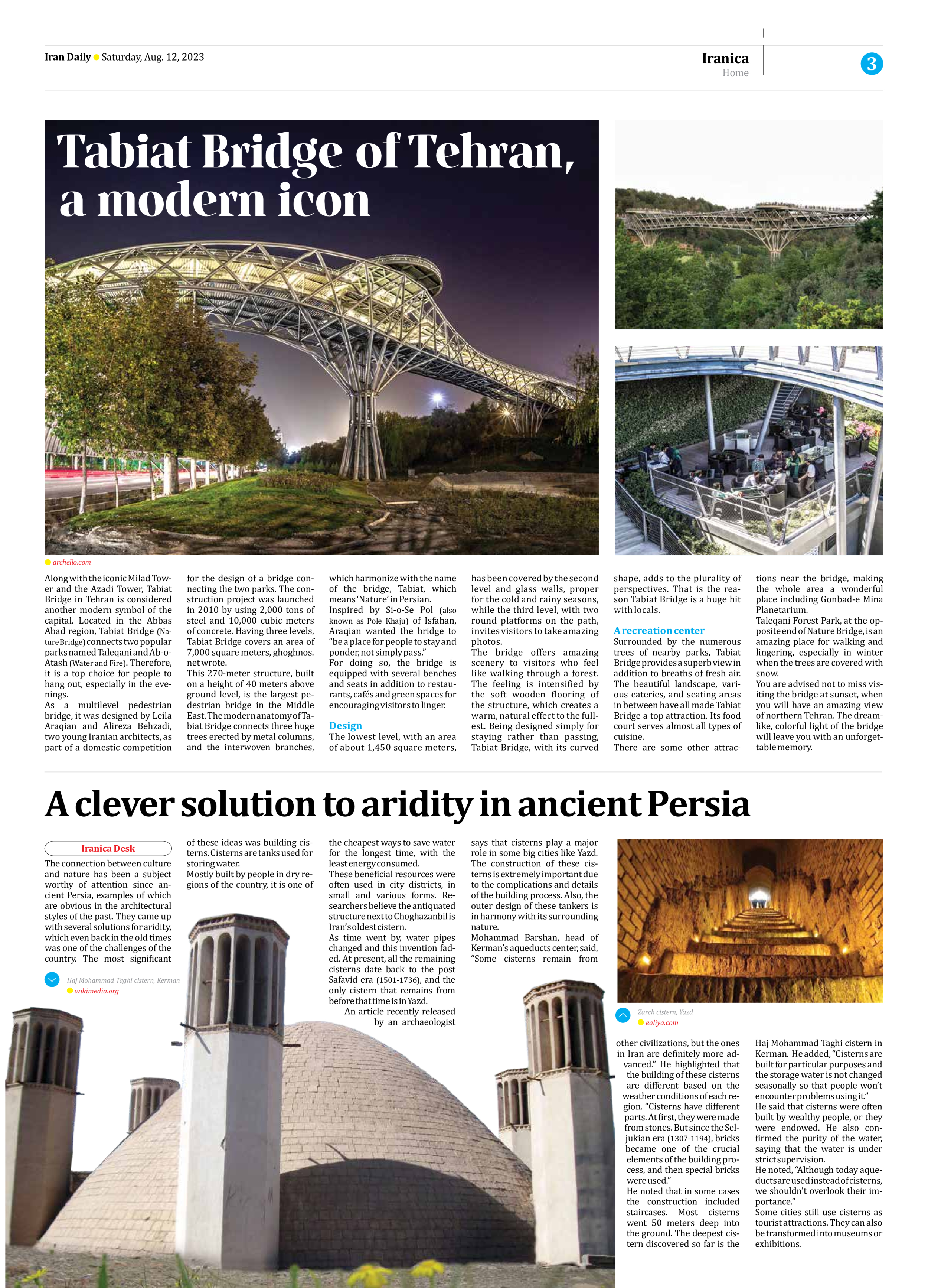
A clever solution to aridity in ancient Persia
The connection between culture and nature has been a subject worthy of attention since ancient Persia, examples of which are obvious in the architectural styles of the past. They came up with several solutions for aridity, which even back in the old times was one of the challenges of the country. The most significant of these ideas was building cisterns. Cisterns are tanks used for storing water.
Mostly built by people in dry regions of the country, it is one of the cheapest ways to save water for the longest time, with the least energy consumed.
These beneficial resources were often used in city districts, in small and various forms. Researchers believe the antiquated structure next to Choghazanbil is Iran’s oldest cistern.
As time went by, water pipes changed and this invention faded. At present, all the remaining cisterns date back to the post Safavid era (1501-1736), and the only cistern that remains from before that time is in Yazd.
An article recently released by an archaeologist says that cisterns play a major role in some big cities like Yazd. The construction of these cisterns is extremely important due to the complications and details of the building process. Also, the outer design of these tankers is in harmony with its surrounding nature.
Mohammad Barshan, head of Kerman’s aqueducts center, said, “Some cisterns remain from other civilizations, but the ones in Iran are definitely more advanced.” He highlighted that the building of these cisterns are different based on the weather conditions of each region. “Cisterns have different parts. At first, they were made from stones. But since the Seljukian era (1307-1194), bricks became one of the crucial elements of the building process, and then special bricks were used.”
He noted that in some cases the construction included staircases. Most cisterns went 50 meters deep into the ground. The deepest cistern discovered so far is the Haj Mohammad Taghi cistern in Kerman. He added, “Cisterns are built for particular purposes and the storage water is not changed seasonally so that people won’t encounter problems using it.”
He said that cisterns were often built by wealthy people, or they were endowed. He also confirmed the purity of the water, saying that the water is under strict supervision.
He noted, “Although today aqueducts are used instead of cisterns, we shouldn’t overlook their importance.”
Some cities still use cisterns as tourist attractions. They can also be transformed into museums or exhibitions.







